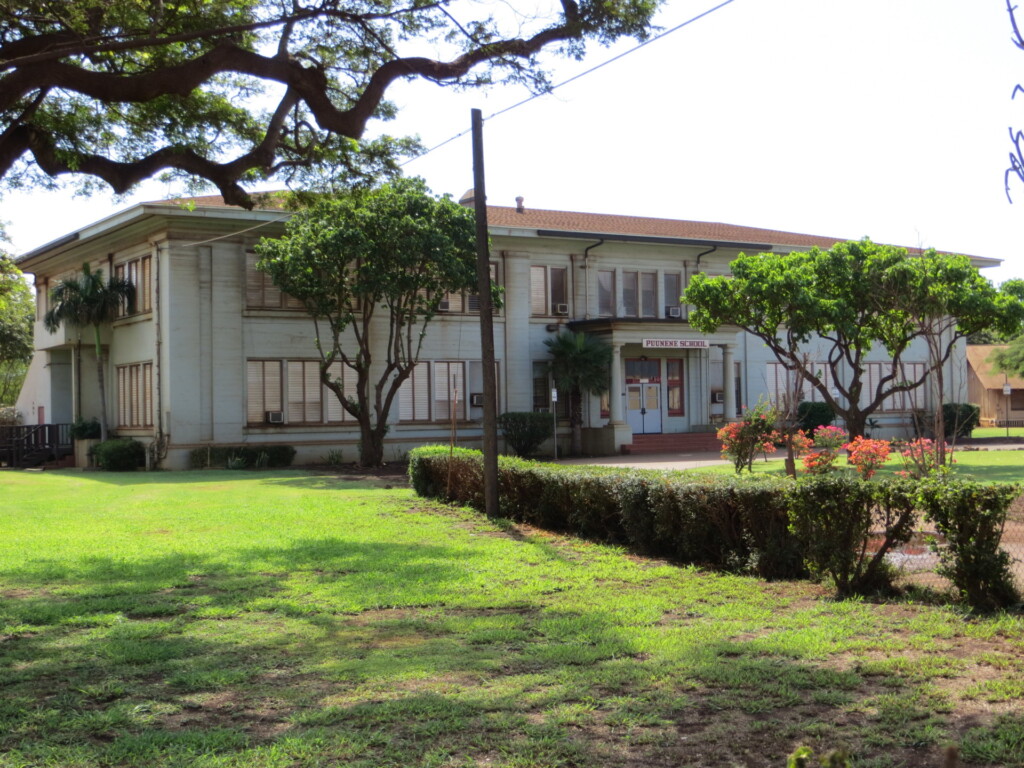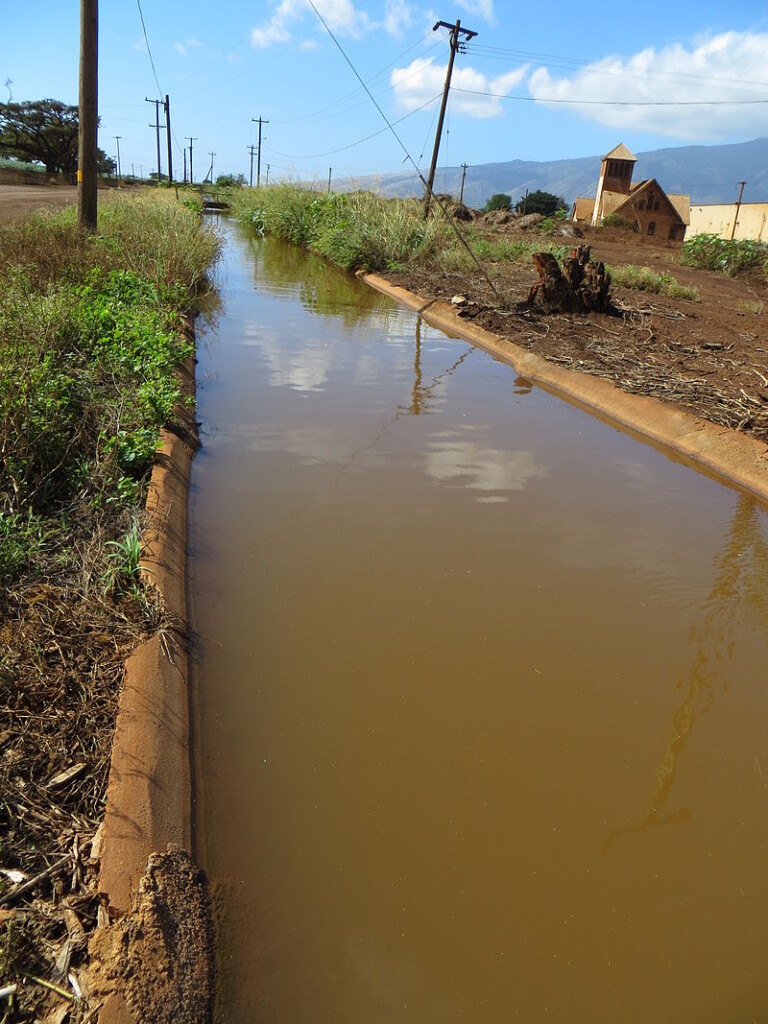
The Puʻunēnē School is a historic school building in the community of Puʻunēnē in the central part of Maui, Hawaii near Kahului. Puʻu nēnē means “nēnē goose hill” in Hawaiian. Puʻunēne’s primary industry was growing, harvesting and processing sugarcane for over a century. Puʻunēnē School was built in 1922 by the Hawaiian Commercial and Sugar Company (a division of Alexander & Baldwin). The school was constructed on 10 acres of land donated by the company in 1913. Upon completion, it replaced an earlier four-room school on the site that was built to hold 350 students.
In 1937 to 1940, Puʻunēnē School science teacher Soichi Sakamoto’s began training boys in a Three-Year Swim Club to compete for the 1940 Summer Olympics originally scheduled to be held in Tokyo, Japan but cancelled due to World War II. “Sakamoto’s swimmers would win medals in later Olympics, fulfilling his dream of creating world-class athletes and continuing Hawai‘i’s tradition of cultivating great swimmers like Duke Kahanamoku.” (See Further Resources below.)
Puʻunēnē School is significant as a surviving architectural example of a school from the early twentieth century on Maui and for its role in the history of education on Maui. The Classical Revival 1922 two-story concrete building became Maui’s largest elementary school with about 1000 students in grades one through eight from nearby communities. In the 1950s the area went into decline as many families moved to Kahului. In the 1950s and 1960s the building was used for special education classes. In 1979 it became an administrative annex for the Department of Education. Puʻunēnē School was added to the Hawai‘i Register of Historic Places in August 2000.
- Puunene School auxiliary building in old plantation style, Puunene, Wailuku. Photo by Joel Bradshaw
- Irrigation ditch where the Three-Year Swim Club practiced. Photo by Joel Bradshaw
The 1o0th anniversary of Pu‘unēnē School in Maui was commemorated at the 2022 Preservation Honor Awards Ceremony and Reception on October 20, 2022.
Sources:
Puʻunēnē School – Puʻunēnē Village
Puʻunēnē School – Historic Hawaii Foundation
Further Resources:
Soichi Sakamoto and the Three Year Swim Club “The World’s Greatest Swimming Coach,” Hawaiian Journal of History



